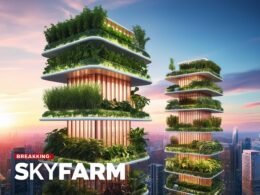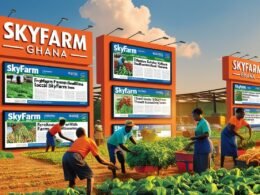GREENING GHANAIAN CITIES
By Gabriel Adukpo
A FRIEND of mine got excited when he was offered a course in engineering at the Kwame Nkrumah University of Science and Technology in Kumasi. On the first weekend of reporting, he and two colleagues hired a taxi to take them around the city to see important places. When they returned to campus, they asked, “Where is the garden?”
Indeed, the three students knew Kumasi as the Garden City of West Africa. They did not envisage the entire city being referred to as such.
The description of Kumasi in the 1940s could easily be likened to a garden city by all standards due to its beautiful green areas. Yet Queen Elizabeth gave Kumasi the accolade of Garden City of West Africa.
Queen Elizabeth II was on an official visit to Ghana in 1961. Her Majesty visited Kumasi and admired how the city was built within a forested landscape. She saw a wide variety of plants, including ornamentals, dotted along ceremonial streets in the city. According to the historian, Sarfo Kantanka, “Due to the greenery of Kumasi, Queen Elizabeth described the place as a garden city.”
City authorities in Kumasi then enacted bylaws to protect various trees. Plants should not be cut, grubbed, or mutilated without permission. An accidental fall of a tree was like a bereavement. That was the extent to which residents treasured greenery.
Despite the assault on plant life in Kumasi over the years, one could say that the garden is still in the city and the city remains a garden. Other cities need greening too.
It, therefore, makes sense for cities to leverage the Green Ghana Project for their beautification. This is because the initiative is basically an afforestation project seeking to halt deforestation and restore degraded lands. But land degradation is particularly accelerated in human settlements. The Green Ghana Project will thus serve the cities well if the cities adapt it to their peculiar requirements.
In the meantime, let us pay special attention to the 16 regional capitals. Greening them is tantamount to beautifying them. Unlike farmlands and forests, where a continuous band of land is to be planted with trees, cities have selected areas to be planted.
Each city has its road network, built environment, and distribution of infrastructure and services. A unique motley of green landscapes is expected to be produced accordingly. The situation has to be analyzed well and planned, not from the center but from each action point.
A wide array of stakeholders is necessary for decentralized planning, implementation, monitoring, and evaluation. Chief executives or mayors, and the assemblies’ technocrats, are to take charge. Next are personnel from the Environmental Protection Agency, Parks and Gardens, Town and Country Planning, Ghana Education Service, traditional councils, the media, nursery operators, and other interest groups.
The roles, aspirations, and fears of the stakeholders will feed into formulating strategies and activities for the project. For example, it will come to light that it isn’t a matter of planting trees only, but also issues concerning the disposal of garbage and haphazard development in the cities.
Base maps will have to be produced where none exist. Avenues and road medians are designated. Erosion-prone areas are noted, and recreational areas are delineated. In addition, lands for industrial development and urban agriculture are to be carved out.
Efforts should be made to harmonize city spatial plans with those of adjoining districts, especially for final garbage disposal sites. Then, the neighboring municipalities and districts will be the next focus for beautification.
Another important activity in the series is nursery work. Here, assorted tree seedlings, shrubs, and grasses are raised in sufficient quantities and sizes. Then comes the D-Day, the Green Ghana Day.
The media hype that heralds D-Day will determine the level of enthusiasm and participation. Speeches from top government officials, chiefs, religious leaders, and foreign diplomats will whip students, identifiable groups, and ordinary residents into action on Green Ghana Day. It is planting and watering all day in areas mapped out for the occasion.
A culture of post-planting care has to be instilled in city dwellers. It will be appropriate to organize inter-school flower garden competitions. Electoral areas, too, must be assessed on how well they maintain the plants in their jurisdictions. This can culminate in intercity green city competitions.
No one can deny that almost every household uses charcoal or firewood for cooking. This translates into several hectares of forest loss every year. The Green Ghana Project is therefore a logical solution. Every city dweller should be a watchdog against those who may vandalize valuable plant species.
Officialdom would do us good by facilitating the production of cheap, energy-saving, and pollution-free cooking stoves. Solar energy must be further harnessed, and liquefied petroleum gas must be made affordable.
It should become obvious that greening our cities is a year-long and annual affair. Everyone is called upon to commit to it.
All we want is tourist-attracting cities with clean, fresh air and cool microclimates. They should be similar to famous green cities like Amsterdam in the Netherlands and Malmö in Sweden. We pray that the likes of Queen Elizabeth would proclaim the whole country, Ghana, as the Garden of West Africa soon. Perhaps King Charles III is watching.
END
The writer is an agriculturist and a freelance writer.









